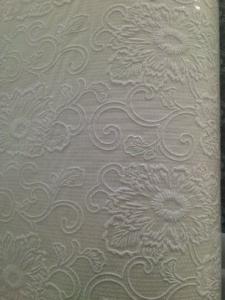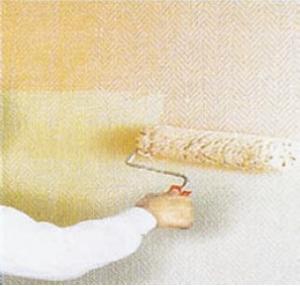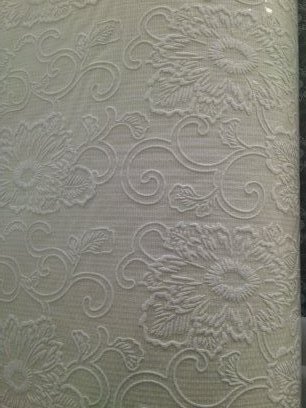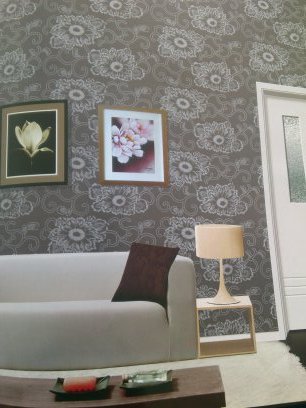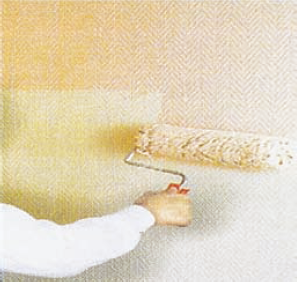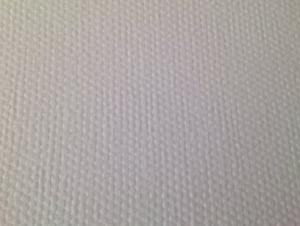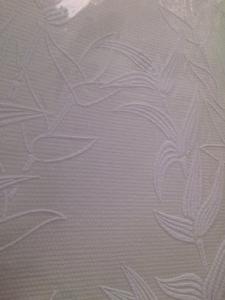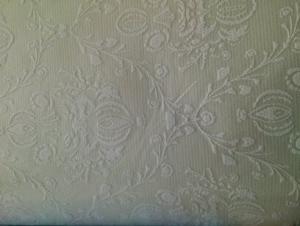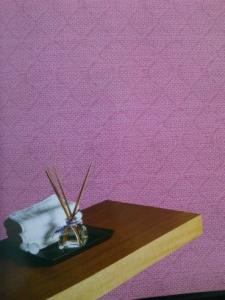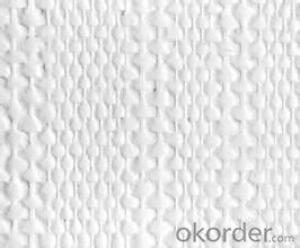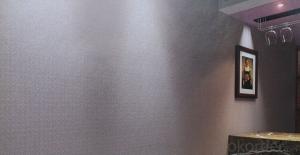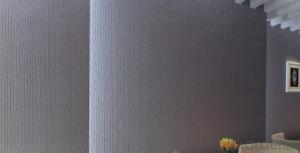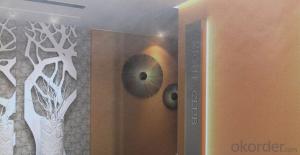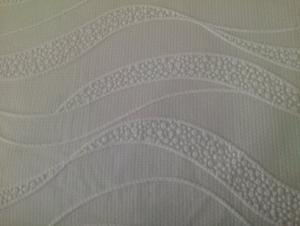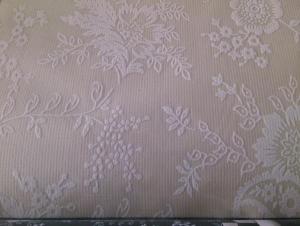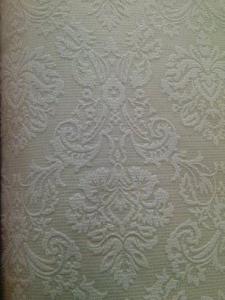Fiberglass Wallcovering Cloth - Foam Glassfiber Wall Covering Cloth G1104
- Loading Port:
- China Main Port
- Payment Terms:
- TT or LC
- Min Order Qty:
- 10000M2 m²
- Supply Capability:
- 1000000square meter/month m²/month
OKorder Service Pledge
OKorder Financial Service
You Might Also Like
Product Description of Foam Fiberglass Wallcovering:
Fiberglass wallcovering cloth,that combines the versatility of paint,from latex to epoxy ,with the strength and benefits of woven
fiberglass textile yarns to meet the most demanding wall finish requirements.Fiberglass textile yarns, as a kind of natural materials
are woven into various textures and patterns and then treated with a natural starch binder for dimensional stability during the hanging
process.As a high-tech indoor decorating material,fiberglass wall covering cloth is widely used in resident homes,offices and shops
and even cinemas,theatres,hotels and hospital facilities,air ports,offic building,shopping centrals and schools.
Compared with traditional wall paper,fiberglass wall covering cloth has the following advantages:
·Environment Friendly · Flame Retardant · Air Permeability
·Shock Resistance · Waterproofing · Anti-corrosion
·Abundant Colors & Patterns
International Corporation of Foam Fiberglass Wallcovering
Style | Yarn Density (ends/250px) | Area Weight (G/㎡) with ± 10% tolerance | |
Warp | Weft | ||
000 | 40 | ||
001 | 30 | 20 | 120 |
002 | 30 | 17 | 100 |
003 | 50 | 30 | 130 |
004 | 80 | 33 | 160 |
006 | 30 | 22 | 140 |
007 | 15 | 16 | 175 |
008 | 30 | 26 | 150 |
011 | 30 | 25 | 150 |
012 | 30 | 25 | 150 |
013 | 30 | 26 | 150 |
014 | 30 | 26 | 150 |
016 | 80 | 45 | 175 |
019 | 40 | 45 | 240 |
021 | 34 | 34 | 170 |
022 | 30 | 28 | 150 |
023 | 30 | 25 | 150 |
024 | 30 | 25 | 150 |
025 | 30 | 25 | 150 |
026 | 30 | 25 | 140 |
027 | 80 | 45 | 165 |
028 | 30 | 24 | 145 |
029 | 30 | 24 | 145 |
Externals picture of Foam Fiberglass Wallcovering
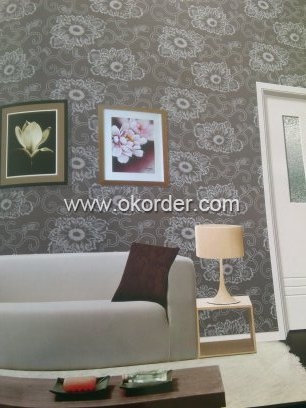
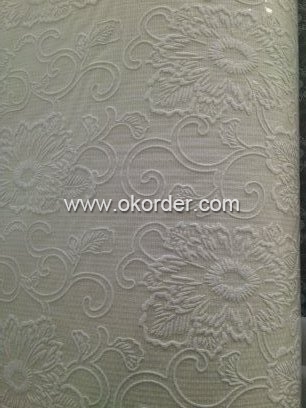
Packaging of Foam Fiberglass Wallcovering
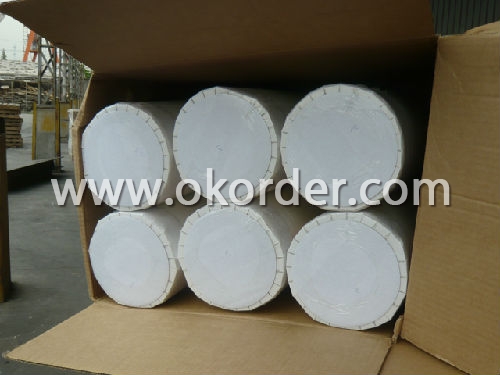
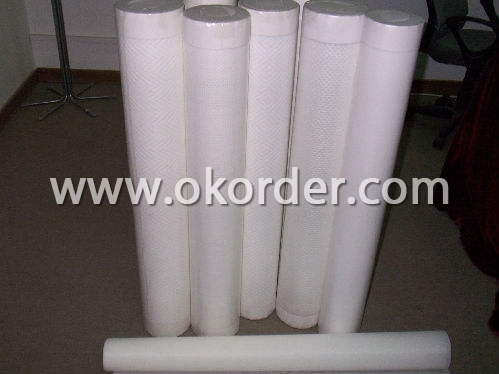
- Q: Does fiberglass wallcovering cloth have any health risks associated with it?
- Fiberglass wallcovering cloth does pose some potential health risks, primarily due to the tiny glass fibers it contains. These fibers can become airborne when the material is handled or disturbed, and if inhaled, can irritate the respiratory system. Short-term exposure to fiberglass fibers may cause symptoms such as coughing, wheezing, throat irritation, and skin irritation. However, the health risks associated with fiberglass wallcovering cloth are generally low if proper precautions are followed. It is important to wear protective gear, such as gloves, goggles, and a mask, when working with or removing fiberglass cloth. Taking measures to minimize the release of fibers, such as wetting the material before handling or using a vacuum cleaner with a HEPA filter, can also help reduce the risk of exposure. It is worth noting that long-term exposure to fiberglass fibers has been linked to more serious health issues, such as lung disease and cancer. However, the risk of these conditions is primarily associated with occupational exposure, where individuals are consistently exposed to high levels of fiberglass over extended periods of time. In summary, while fiberglass wallcovering cloth does carry some health risks due to the potential release of glass fibers, these risks can be minimized by following proper safety precautions. If you have concerns about working with fiberglass cloth, it is recommended to consult with a professional or consider alternative materials.
- Q: Is fiberglass wallcovering cloth suitable for use in swimming pools or other water-related environments?
- No, fiberglass wallcovering cloth is not suitable for use in swimming pools or other water-related environments. While fiberglass is known for its durability and resistance to chemicals, it is not designed to withstand prolonged exposure to water. Fiberglass wallcovering cloth is more commonly used in dry areas such as commercial buildings, offices, or homes where there is minimal moisture or humidity. In water-related environments, it is recommended to use specialized materials such as tiles, epoxy coatings, or waterproof paints that are specifically designed to withstand the constant exposure to water and the associated humidity and moisture. These materials are specifically formulated to provide a waterproof barrier and prevent any damage or deterioration caused by water.
- Q: Can fiberglass wallcovering cloth be applied over existing wallpaper?
- Indeed, it is possible to apply fiberglass wallcovering cloth over existing wallpaper. Nevertheless, it is crucial to acknowledge that the existing wallpaper must be in optimal condition and securely attached to the wall. If the wallpaper is peeling or damaged, it is advisable to eliminate it prior to applying the fiberglass cloth. Moreover, any loose or raised seams should be reattached or fixed before the cloth is applied. By applying the fiberglass cloth over existing wallpaper, one can enhance the wall surface's durability and strength, while also concealing any flaws or texture from the previous wallpaper.
- Q: Can fiberglass wallcovering cloth be used in soundproofing applications?
- Yes, fiberglass wallcovering cloth can be used in soundproofing applications. Its dense and fibrous composition helps to absorb and dampen sound waves, reducing noise transmission through walls and other surfaces.
- Q: Can fiberglass wallcovering cloth be used in exterior column wraps or pilasters?
- Yes, fiberglass wallcovering cloth can be used in exterior column wraps or pilasters. Fiberglass is a durable and weather-resistant material that can withstand outdoor elements, making it suitable for use in these applications.
- Q: Does fiberglass wallcovering cloth provide any insulation properties?
- Indeed, the utilization of fiberglass wallcovering cloth does offer insulation capabilities. Fiberglass possesses renowned thermal insulating characteristics, allowing it to impede the transmission of heat across walls. When employed as a wallcovering, the fiberglass cloth acts as an supplementary insulation layer, diminishing heat dissipation during winter and heat accumulation during summer. Nonetheless, it is crucial to acknowledge that the insulation properties of fiberglass wallcovering cloth may not match those of alternative materials like foam or cellulose. Consequently, it is prudent to contemplate other insulation alternatives if optimizing energy efficiency is of utmost importance.
- Q: Fiberglass (sea cloth) shortcomings
- Fiberglass, adopts natural quartz material and refined, according to all kinds of knitting process has rich texture, with a unique European low relief art style, is actually a quartz fiberglass woven cloth.
- Q: Can fiberglass wallcovering cloth be used in exterior applications?
- Indeed, exterior applications can make use of fiberglass wallcovering cloth. The durability and resistance of fiberglass to environmental elements, including UV rays, moisture, and temperature changes, are well-known. These qualities render it suitable for outdoor use, enduring diverse weather conditions. Moreover, fiberglass wallcovering cloth is effortlessly cleaned and maintained, making it a pragmatic option for outdoor purposes. Nonetheless, it is crucial to emphasize the significance of employing proper installation methods and utilizing suitable adhesive to guarantee the long-lasting and efficient performance of fiberglass wallcovering cloth in exterior applications.
- Q: What are the different types of fiberglass wallcovering cloth?
- In the market, one can find a variety of fiberglass wallcovering cloth options. These options differ in terms of composition, texture, and intended use. A popular choice is woven fiberglass cloth. This type is created by weaving thin strands of fiberglass together, resulting in a strong and durable material. Woven fiberglass cloth is commonly used as a foundational layer for wallcoverings, providing stability and strength to the final product. Another option is non-woven fiberglass cloth. This variation is made by bonding or needle-punching fiberglass fibers together, resulting in a textured and flexible material. Non-woven fiberglass cloth is often used in wallcoverings that require a softer and more textured appearance. The texture of the surface can also classify fiberglass wallcovering cloth. There are options available such as smooth, textured, embossed, or patterned fiberglass cloth. These variations allow for different aesthetic choices and can add depth and visual interest to wallcoverings. Furthermore, fiberglass wallcovering cloth can be categorized based on its fire resistance. Certain types of fiberglass cloth are specifically designed to possess fire-resistant properties, making them suitable for use in areas where fire safety is a concern. Overall, the diverse range of fiberglass wallcovering cloth types offers various options for different applications. Whether one requires durability, texture, aesthetics, or fire resistance, there is a type of fiberglass wallcovering cloth available to cater to specific needs and preferences.
- Q: How does fiberglass wallcovering cloth compare to vinyl wallcovering?
- Both fiberglass wallcovering cloth and vinyl wallcovering are popular options for covering walls, but they differ in terms of durability, appearance, and installation. When it comes to durability, fiberglass wallcovering cloth generally surpasses vinyl wallcovering. Fiberglass is known for its strength and resistance to tearing, making it ideal for areas with heavy traffic or prone to impacts. On the other hand, vinyl is more susceptible to scratches and tears, especially in high-use areas or places where sharp objects may come into contact with the walls. Appearance is another aspect to consider. Fiberglass wallcovering cloth typically has a textured and natural look, resembling fabrics like linen or burlap, which adds depth and visual interest to a room. Conversely, vinyl usually has a smoother and more uniform appearance, often with a glossy finish. While vinyl provides a sleek and modern look, it may lack the same level of visual texture as fiberglass. Installation methods also differ between the two options. Fiberglass wallcovering cloth is typically installed by applying adhesive directly to the wall and then pressing the cloth onto it. This method requires precision and can be time-consuming. On the other hand, vinyl wallcovering is often pre-pasted or peel-and-stick, making it easier and faster to install. Vinyl is a good choice for DIY projects or for those who prefer a simpler installation process. In conclusion, fiberglass wallcovering cloth offers superior durability and a textured, natural appearance, but requires more involved installation. On the other hand, vinyl wallcovering is easier to install and provides a smooth, uniform look, but may not be as durable in high-traffic areas. Ultimately, the choice between the two depends on your specific needs, preferences, and desired aesthetic for your space.
1. Manufacturer Overview
| Location | Zhejiang,China |
| Year Established | 2007 |
| Annual Output Value | |
| Main Markets | |
| Company Certifications |
2. Manufacturer Certificates
| a) Certification Name | |
| Range | |
| Reference | |
| Validity Period |
3. Manufacturer Capability
| a) Trade Capacity | |
| Nearest Port | |
| Export Percentage | |
| No.of Employees in Trade Department | |
| Language Spoken: | |
| b) Factory Information | |
| Factory Size: | |
| No. of Production Lines | |
| Contract Manufacturing | |
| Product Price Range | |
Send your message to us
Fiberglass Wallcovering Cloth - Foam Glassfiber Wall Covering Cloth G1104
- Loading Port:
- China Main Port
- Payment Terms:
- TT or LC
- Min Order Qty:
- 10000M2 m²
- Supply Capability:
- 1000000square meter/month m²/month
OKorder Service Pledge
OKorder Financial Service
Similar products
Hot products
Hot Searches
Related keywords
